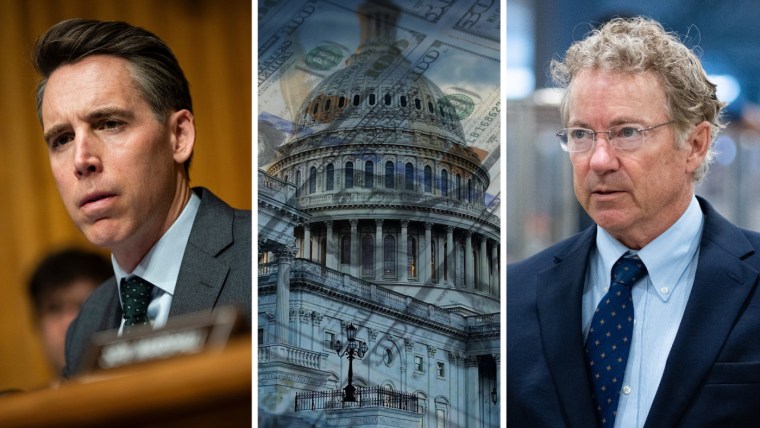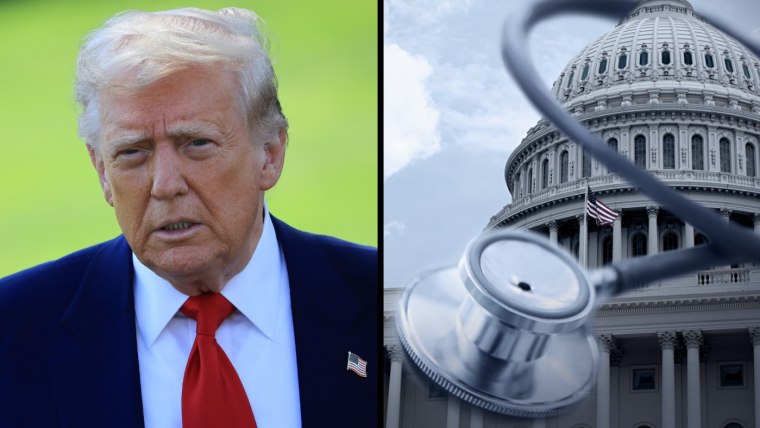Major shifts are on the horizon for the Affordable Care Act (ACA) in 2026 — The Trump administration’s newly proposed rule introduces changes that could leave millions of Americans without viable coverage options or struggling to afford marketplace plans.
Here’s what’s ahead—and why Short-Term Medical (STM) insurance remains a smart, strategic choice, even as we await the potential reinstatement of the previous 3-year coverage option.
Open Enrollment is Shrinking
- Change: Open enrollment will be shortened by 4 weeks, ending December 15 instead of January 15 or later.
- Challenge: Consumers who miss the new deadline will be locked out of ACA coverage.
- STM Solution: STM plans can be purchased year-round, providing immediate gap coverage for those who miss enrollment or need temporary insurance between major life changes.
Year-Round Enrollment for Low-Income Americans May Disappear
- Change: The special enrollment window for low-income individuals could be eliminated.
- Challenge: Vulnerable consumers will have fewer opportunities to secure ACA coverage when they need it.
- STM Solution: STM plans ensure access to coverage for these individuals, bridging them until ACA re-opens or other coverage becomes available.
Subsidy Rollbacks = Steep Premium Increases
- Change: Enhanced federal subsidies are set to expire at the end of 2025, leading to higher out-of-pocket costs across the board.
- Challenge: The Congressional Budget Office estimates 2.2 million could become uninsured due to affordability issues.
- STM Solution: STM offers budget-friendly premiumsand customizable plan options, providing a viable alternative for those priced out of the marketplace.
Reduced Access to Enrollment Assistance
- Change: Funding for navigators is being slashed by 90%, making it harder for consumers to get the help they need.
- Challenge: Confusion and missed opportunities are inevitable, especially for underserved populations.
- STM Solution: Offering STM plans gives consumers a clear, supported path to protection when ACA guidance is lacking.
Reach out today to learn about options available to you:
American Insurance Benefits – Andy Orlikoff
www.AZhealth.us
623-742-3878
Located locally in Surprise Arizona, and serving the entire state.
If you’re tempted to ditch your Medicare Advantage plan, you’re not alone. Here’s when it’s a good idea and how to go about it.

Medicare coverage doesn’t just mean signing up for government insurance. In fact, more than half of Medicare recipients now get their coverage through a Medicare Advantage plan, or Medicare Part C plan, which is offered by a private insurer.
Advantage plans are an alternative to original Medicare, replacing Part A (hospital coverage), Part B (outpatient care coverage), and sometimes Part D (prescription drug coverage).
Enrollment in these plans is expected to grow to 60% of the eligible population by 2030, with many people drawn to them because they’re often marketed as “zero premium” plans with out-of-pocket limits, while Medicare Part B has uncapped spending and charges premiums. The Trump administration strongly favors the expansion of Medicare Advantage plans.
Yet, while Advantage Plans seem like a good alternative, a substantial number of older Americans who sign up for them don’t stick with them. In fact, among those who signed up between 2011 and 2022, around half left their plans within five years.
Recent research published in the journal Health Affairs helps demonstrate why so many are opting out of their Advantage Plan during open enrollment, either by switching to a different Part C plan or by returning to traditional Medicare instead. Since these Advantage plans are less likely to attract beneficiaries over the long term, the study warns that such plans will likely have less incentive to cater to participants with chronic conditions.
Should you ditch your Medicare Advantage plan? Why others are
Researchers sought to gain insight into why Medicare Advantage participants were disenrolling by using information from the Medicare Current Beneficiary Survey, linked with data on Medicare Advantage enrollment. The survey measures patient satisfaction with access to medical care, as well as the cost and quality of the care they receive.
Researchers found two primary factors drove departures from Medicare Advantage plans, and neither was related to cost. Instead, most people who disenrolled did so because of difficulty accessing care as well as concerns about the quality of their care.
Access issues, in particular, were especially likely to prompt Advantage customers not just to switch to a different Medicare Part C plan but instead to return to traditional Medicare. This makes sense, given that traditional Medicare doesn’t impose the same limits as Advantage Plans on which doctors or care providers patients can visit.
Hospitals have also been ending their affiliations with Medicare Advantage Plans, creating huge problems when break-ups happen outside of the open enrollment period, and Advantage Plan customers suddenly find themselves without coverage at the hospital where they’d been treated.
Researchers also revealed that individuals with health issues were more likely to switch out of their Medicare Advantage plan. Those who described themselves as being in poor health were:
- More than twice as likely as other Advantage members to express difficulty with getting care;
- More than three times as likely to be dissatisfied with the quality of care they are getting
- More than twice as likely to be unhappy with the cost of their care
- More than twice as likely to be dissatisfied with their specialty care.
“People who stay in [Medicare Advantage} are shopping for better service, but … those who switch to traditional Medicare are the ones potentially with high health care needs, who are much more strongly driven by dissatisfaction with access to care issues ” said Geoffrey Hoffman, Ph.D., Associate Professor, U-M School of Nursing and one of the study’s authors.
This tendency to switch between Advantage plans or back to original Medicare could undermine the long-term effectiveness of these plans while also driving up the nation’s cost to provide original Medicare. The study warns that Advantage plans will likely focus on the short-term healthcare needs of beneficiaries due to plan hopping.
Retirees, Make The Most Of Roth’s Back Door
A workaround for the Roth IRA income restrictions enables wealthier individuals to to earn tax-free income. But how long will that back door remain open?
How you can find the right Medicare plan
Since concerns about care quality and accessibility were the most likely reasons for retirees to switch out of their Medicare Advantage Plan — often back to traditional Medicare — it’s clear that these are issues that older Americans should pay attention to when shopping for an Advantage Plan.
Those shopping for coverage should visit the Advantage plan’s website to find their searchable directory and determine if their preferred care providers accept that insurance plan. Plan websites may also offer a comprehensive directory of all care providers whose services are covered, providing insight into the breadth of the plan’s network. The Medicare Advantage open enrollment period is from January 1 to March 31 each year. Original Medicare’s open enrollment period is from October 15 to December 7 each year.
Don’t put yourself in this position. The best way to protect yourself is with original Medicare A & B and the a true medicare supplement such as plan G. Turning 65 is also the only time you are eligible for a supplement without answering any health questions.
Let us help answer your questions and provide you with a quote, ensuring you receive all available discounts.
American Insurance Benefits – Andy Orlikoff
Owner/Independent Broker
www.AZhealth.us
623-742-3878 Cell
The nation’s largest insurer is stumbling from crisis to crisis.
In early April, market analysts touted UnitedHealth Group as a “tariff safe haven.”And why not? The Trump administration had just announced an increase in payments to Medicare Advantage plans in 2026. Surely profits would likewise increase for UnitedHealth — not only the nation’s largest insurer, but specifically the largest provider of Medicare Advantage plans.
But, less than two months later, the company is in a state of free fall. Its collapse reflects not simply the troubles of the broader health care market, but also the troubles with Medicare Advantage, the program set up with the idea that the private sector could provide better health care than traditional Medicare at lower prices.
The company faces three federal investigations.
Instead, Medicare Advantage has only succeeded at juicing corporate profits, charging more — and denying more care — than traditional Medicare. And as for UnitedHealth Group, it’s looking quite possible the company’s bottom line was padded by billing fraud and patient abuse.
The company faces three federal investigations, looking at allegations of civil and criminal fraud and antitrust violations. The Wall Street Journal reported in February, for instance, that the DOJ is investigating whether UnitedHealth made its clinician employees record questionable diagnoses that make Medicare Advantage patients appear sicker than they are. This practice, known as “upcoding,” triggered extra federal payments. (UnitedHealth told the Journal it stands “by the integrity of our Medicare Advantage program.”)
And last week The Guardian alleged the company secretly paid nursing homes to prevent or delay transfers of Medicare Advantage patients to hospitals, something that saved the insurance giant money — but cost patients desperately needed care.
“At least one lived with permanent brain damage following his delayed transfer,” The Guardian reported, “according to a confidential nursing home incident log, recordings and photo evidence.” Five current and former UnitedHealth employees told The Guardian that the company “pressed nurse practitioners to persuade Medicare Advantage members to change their ‘code status’ to DNR” – or “do not resuscitate” — rendering them ineligible for “certain life-saving treatments that might lead to costly hospital stays.” (UnitedHealth denied the allegations.)
Somehow, that’s not the end of UnitedHealth’s troubles. A group of investors recently sued the company, claiming it had misled them about its financial outlook following the fatal shooting of Brian Thompson, CEO of UnitedHealthcare, UnitedHealth Group’s insurance arm. (UnitedHealth denied the lawsuit’s allegations.) In mid-May, UnitedHealth Group CEO Andrew Witty suddenly resigned for “personal reasons,” and the company withdrew its earnings guidance to Wall Street for 2025 after a disastrous first quarter, claiming it had underestimated its Medicare Advantage costs.
Because UnitedHealth is vertically integrated, it simultaneously pays for care through UnitedHealthcare and provides care through its health care services arm Optum, which includes both physician practices and pharmacies. This setup gives the conglomerate enormous leverage to dictate which claims are covered, which physicians patients can see and which medications are prescribed to them.
UnitedHealth’s Medicare Advantage strategy has proven very lucrative — until now.
Moreover, UnitedHealth also reimburses its own physician practices and pharmacies much more than competitors. A recent Federal Trade Commission report found the average markup could be more than 7,700%. This systematic under-reimbursement leaves independent physician practices struggling to keep their doors open, and some then sell to Optum, reinforcing UnitedHealth Group’s monopoly power. Disparate payments likewise squeeze independent pharmacies out of business, stranding patients in care deserts.
Ethics aside, UnitedHealth’s Medicare Advantage strategy has proven very lucrative — until now. Since 2003, its annual revenue has increased nearly 15 times over — to $372 billion last year — and its Fortune ranking has climbed 59 spots, to fourth. This strategy also inspired competitors — including CVS Health’s Aetna, Elevance Health’s Anthem, and Humana — to pursue a similarly vertically-integrated business model and Medicare Advantage billing practices. Early this month, the Justice Department sued all three for allegedly paying brokers hundreds of millions of dollars to steer older Americans to their Medicare Advantage plans — and to steer clear of potential enrollees with disabilities. (The companies have said they will fight the allegations.)
Older Americans are drawn to Medicare Advantage because most plans offer supplemental benefits, such as vision and dental coverage, and lower cost-sharing requirements than traditional Medicare. It’s not until they require lifesaving medical care that the program’s disadvantages — including rampant denials — reveal themselves.
For more than two decades, patients and taxpayers have paid a steep price for the Medicare Advantage grift. Only in the last few weeks, though, have shareholders felt any sort of pinch from Medicare Advantage. Finally, it seems UnitedHealth Group’s size and business model may be liabilities rather than assets.
Although the Trump administration plans to hike Medicare Advantage payments next year, plans are still reeling from a Biden administration rule that limited upcoding. UnitedHealth Group also floundered because, as mentioned earlier, Medicare Advantage costs exceeded expectations. More specifically, patients sought more care than expected during the first three months of the year, perhaps in part because of pent-up post-pandemic demand. Regardless of the reason, UnitedHealth had to provide more service, as The Wall Street Journal explained, both as an insurer paying for claims and as a provider “absorbing the higher cost of delivering that care.”
A growing number of members of Congress from both parties are sounding the alarm.
This is the fundamental flaw at the heart of Medicare Advantage. Plans are beholden to shareholders, who seek short-term profits. Profits are only achievable through the widespread denial of care. Meanwhile, plans use these profits to buy up entities along the health care supply chain, whose clinicians and other employees can do the insurance company’s bidding.
A growing number of members of Congress from both parties are sounding the alarm. Reps. Lloyd Doggett, D-Texas, and Greg Murphy, R-N.C., recently requested an investigation into private Medicare Advantage plans. Rep. Pat Ryan, D-N.Y., sent a letter to Attorney General Pam Bondi, urging her to hold UnitedHealth Group accountable. At a recent meeting of the Senate Judiciary Committee, several senators called for breaking up big insurers like UnitedHealth. Sen. Cory Booker, D-N.J., decried “a level of corporate violence that is costing American lives, a level of colossal greed at the expense of patient wellbeing.” Sen. Josh Hawley, R-Mo., echoed this sentiment. “Why shouldn’t we be breaking you guys up?” he asked. “[T]his looks like classic monopolist behavior. The patients are getting screwed. … You’re getting rich.”
Meanwhile, traditional Medicare chugs along, costing Americans 20% less than its for-profit rivals while besting them on a majority of care metrics. It turns out the federal government is a much better steward of taxpayer dollars than rapacious executives and shareholders. Yet, traditional Medicare now only covers a minority of Medicare patients.
It’s time to face the truth. Medicare Advantage — like all private health insurance — is structurally unsound. Nothing short of a complete overhaul can cure the U.S. health care system of this disease.
If you would like a quote on a true Medicare Supplement, please reach out to us!
Andy Orlikoff
623-742-3878 or [email protected]




